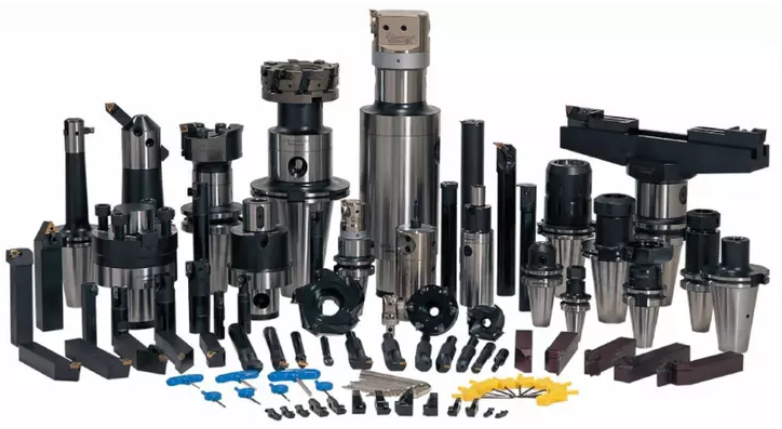
Common Cutting Tools for CNC Lathes
Common Cutting Tools for CNC Lathes
- External Cutting Tools
External cutting tools include turning tools and flat milling cutters. Turning tools are used for turning and finishing processes and are generally classified into hexagonal reamers, turning tools, rough milling cutters, and fine milling cutters. Flat milling cutters are used for milling processes and come in various types such as multi-face milling cutters and surface cutters. External cutting tools should be made of materials with high hardness, good wear resistance, and strong stability.
2.Internal Cutting Tools
Internal cutting tools are used for hole machining, groove machining, and other processes. Internal cutting tools generally include boring bars, drilling tools, and reamers. Boring bars are mainly used for rough machining of high-hardness metal materials such as steel and cast iron, while drilling tools and reamers are used for precision machining.
3.Thread Cutting Tools
Thread cutting tools mainly include taps, thread reamers, spiral thread milling cutters, thread cutters, and thread tapping tools. They are primarily used for thread machining, and different thread cutting tools should be selected according to the machining requirements to ensure the machining results and efficiency.
4.Drilling Tools
Drilling tools mainly include drill bits and drilling toolsets. They are suitable for hole machining processes and are characterized by high machining accuracy, efficiency, and ease of operation.
In conclusion, there are various types of cutting tools commonly used in CNC lathes, and it is important to select the appropriate tools based on different machining scenarios and requirements. Additionally, it is crucial to pay attention to the maintenance and replacement of the cutting tools to ensure machining quality and production efficiency.
Basic Performance Requirements for Cutting Tool Materials
The selection of cutting tool materials has a significant impact on tool life, machining efficiency, machining quality, and machining costs. Cutting tools experience high pressures, temperatures, friction, impacts, and vibrations during cutting. Therefore, cutting tool materials should possess the following basic performance characteristics:
- Hardness and Wear Resistance: The hardness of the cutting tool material must be higher than that of the workpiece material, generally requiring a hardness above 60HRC. The higher the hardness of the cutting tool material, the better its wear resistance.
- Strength and Toughness: Cutting tool materials should have high strength and toughness to withstand cutting forces, impacts, and vibrations, preventing tool brittle fracture and chipping.
- Heat Resistance: Cutting tool materials should have good heat resistance, capable of withstanding high cutting temperatures, and exhibiting excellent oxidation resistance.
- Processability and Economic Viability: Cutting tool materials should have good forging, heat treatment, and welding properties, as well as grinding processability, while striving for a high performance-to-price ratio.